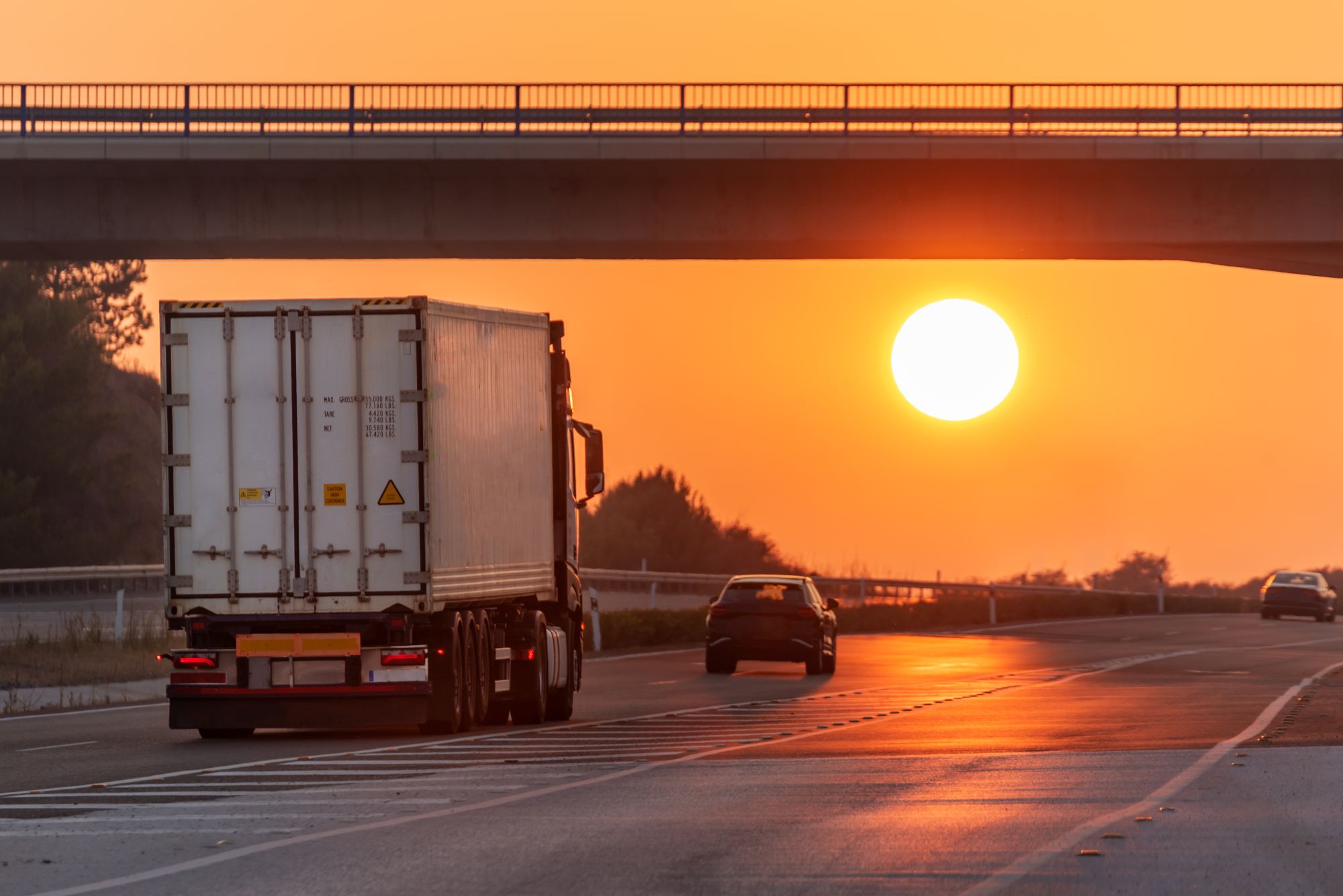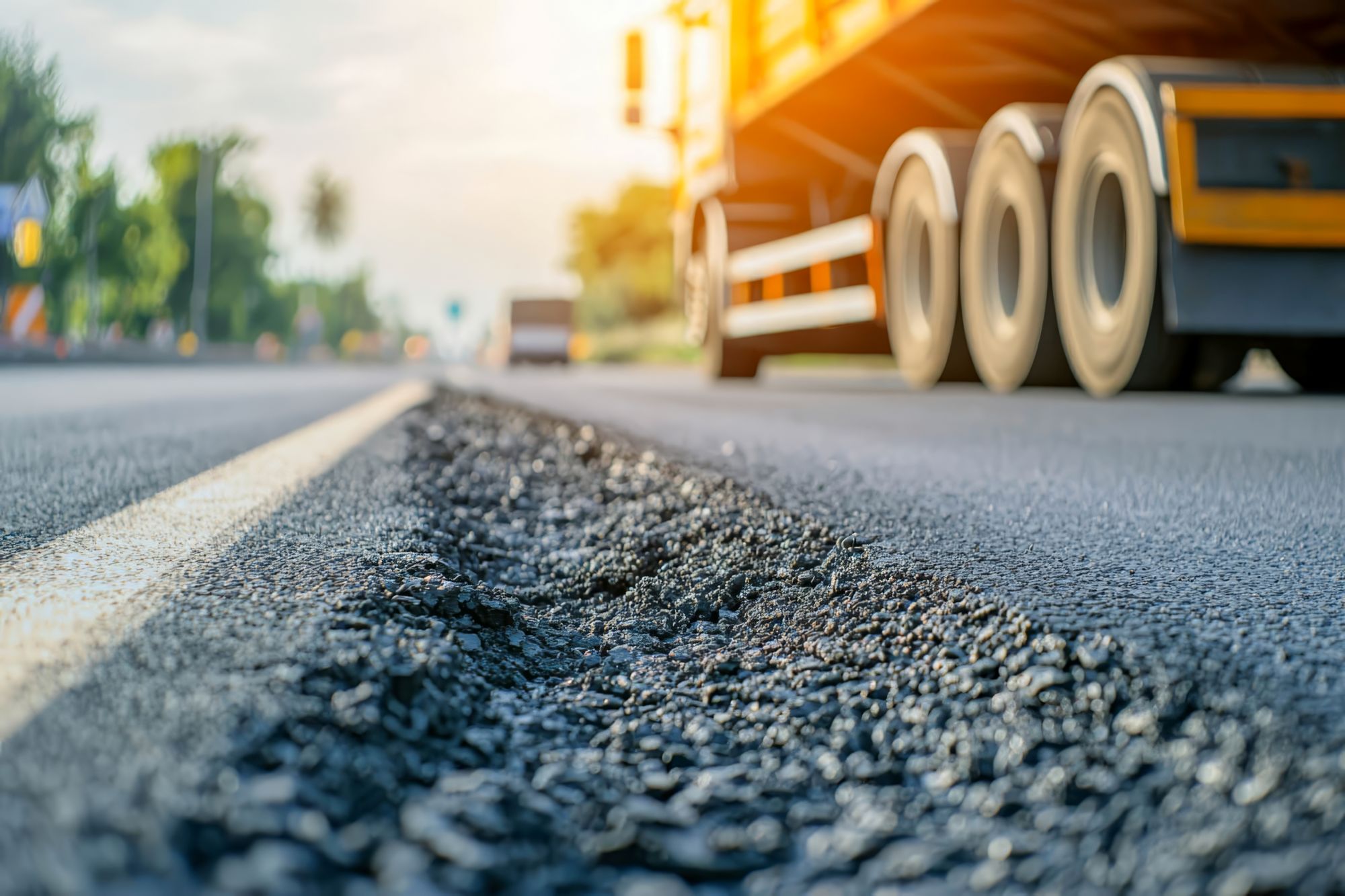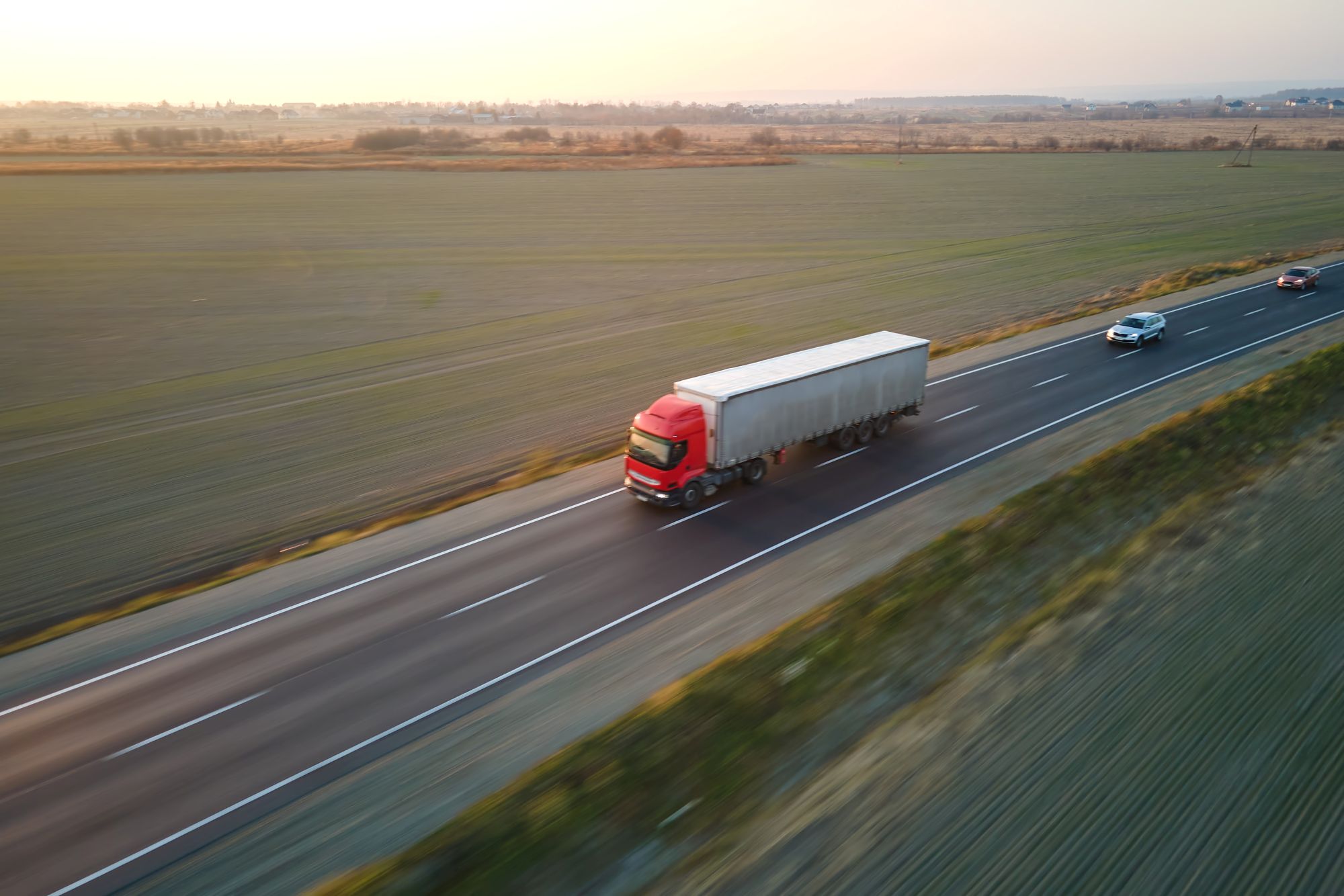
Guest
Jak fala upałów w Europie wpływa na mobilność: jak być na bieżąco
Utworzony: 31.07.2025
•
Aktualizacja: 31.07.2025
Europejskie drogi płoną - a upał tylko rośnie. Na całym kontynencie lipiec 2025 r. przyniósł rekordowe temperatury, awarie infrastruktury i zakłócenia w transporcie na niespotykaną dotąd skalę. Dla operatorów flot i zawodowych kierowców wyzwanie nie jest już teoretyczne. Ekstremalne upały już nadeszły i zmieniają krajobraz mobilności w czasie rzeczywistym.
Wiele napisano o wpływie tegorocznej fali upałów na zdrowie i sygnały klimatyczne. Ale znacznie mniej uwagi poświęcono temu, jak wpływa ona na logistykę, sieci transportowe i ludzi, którzy utrzymują przepływ towarów przez granice.
Ten artykuł analizuje, w jaki sposób fale upałów zakłócają funkcjonowanie europejskiego sektora transportu drogowego - od topniejącego asfaltu i popękanych autostrad po pożary, obawy o bezpieczeństwo kierowców i opóźnienia w dostawach - i oferuje praktyczne porady, które pomogą flotom pozostać operacyjnymi, odpornymi i o krok do przodu.
Fale upałów stają się nową normą
Według Światowej Organizacji Meteorologicznej, Europa regularnie doświadcza ekstremalnych upałów, z temperaturami znacznie przekraczającymi normy sezonowe. W pierwszym tygodniu lipca 2025 r. Niemcy odnotowały najwyższe temperatury powyżej 39°C, podczas gdy Hiszpania i Portugalia doświadczyły temperatur przekraczających 46°C w ciągu miesiąca. Europa jako całość ociepla się mniej więcej dwukrotnie szybciej niż średnia globalna.
Takie warunki są nie tylko niekomfortowe, ale także zakłócają działalność operacyjną. Badania cytowane przez Logistics Business pokazują, że fale upałów są rosnącym czynnikiem ryzyka dla operacji transportowych, zmniejszając dobrobyt kierowców, uszkadzając ładunek i opóźniając dostawy.
W rezultacie coraz trudniej jest bezpiecznie przewozić ładunki wrażliwe na temperaturę, takie jak żywność, farmaceutyki i elektronika. Operatorzy obserwują rosnące wskaźniki zepsucia i kary za opóźnienia w dostawach. Sytuacja jest szczególnie złożona w obszarach, w których sieci energetyczne są napięte przez zwiększone zapotrzebowanie na chłodzenie, co zmniejsza niezawodność łańcucha chłodniczego.
Topniejące drogi i pękające autostrady
Jedna z najwyraźniejszych oznak wpływu upałów na mobilność pojawiła się na początku lipca, kiedy części niemieckiej sieci autostrad zaczęły pękać pod wpływem rozszerzalności cieplnej. Odcinki autostrad A1, A9 i A10, między innymi, zostały zamknięte w celu pilnych napraw, ponieważ betonowe płyty wyboczyły się i pękły połączenia - bezpośrednia konsekwencja przedłużającej się fali upałów w kraju.
Wraz ze wzrostem temperatury gruntu i wysychaniem roślinności, pożary stają się również regularną - i niebezpieczną - cechą europejskiego lata. Według Wikipedii, podsumowującej europejską falę upałów w 2025 r., pożary wybuchły w południowej Hiszpanii, Niemczech i Grecji, powodując masowe ewakuacje i tymczasowe zamknięcie głównych dróg i przejść granicznych.
W czerwcu 2025 r. droga A939 w Szkocji została zamknięta](https://www.firescotland.gov.uk/news/update-on-wildfire-incidents-across-highland-and-moray/) z powodu pożarów, podczas gdy pożary zamknęły kilka dróg i tuneli drogowych wokół Marsylii we Francji. Zamknięcia te nie tylko powodują chaos w ruchu drogowym - oznaczają one, że samochody ciężarowe muszą zmienić trasę, często przez wąskie, nieodpowiednie drogi, co może wydłużyć czas podróży o wiele godzin.
Ponadto dym ogranicza widoczność dla kierowców i stanowi zagrożenie dla zdrowia, zwłaszcza dla osób spędzających długie godziny w kabinie z nieodpowiednią filtracją powietrza. Na wielu obszarach służby ratunkowe są przeciążone, co oznacza opóźnienia w usuwaniu skutków katastrofy lub zarządzaniu objazdami.

Bezpieczeństwo kierowców
Zagrożeniom dla infrastruktury towarzyszą zagrożenia dla ludzi. Zawodowi kierowcy są szczególnie narażeni na stres cieplny, odwodnienie i zmęczenie. W [własnym letnim przewodniku] SNAP (https://snapacc.com/newsroom/a-truck-drivers-guide-to-summer-in-europe/) dla kierowców przedstawiono zagrożenia związane z przegrzaniem kabin, obciążeniem związanym z długimi godzinami pracy w wysokich temperaturach oraz znaczeniem systemów chłodzenia i odpoczynku.
Wiele przydrożnych obiektów w południowej i wschodniej Europie jest słabo wyposażonych, aby wspierać dobre samopoczucie kierowców podczas fal upałów. Klimatyzowane przystanki, zacienione parkingi i niezawodny dostęp do wody nie są gwarantowane - co sprawia, że SNAP sieć zweryfikowanych, wygodnych lokalizacji jest ważniejsza niż kiedykolwiek.
"Tegoroczna fala upałów to sygnał alarmowy" - mówi Raquel Martinez, europejski kierownik sprzedaży w SNAP. "Europejskie systemy transportowe zostały zaprojektowane z myślą o chłodniejszym klimacie. Ale nie cofniemy się. Floty, które dostosują się teraz - z odpowiednimi narzędziami, odpowiednimi strategiami odpoczynku i odpowiednią technologią - będą tymi, które będą prosperować".
Zakazy dla ciężarówek w całej Europie
W odpowiedzi na upały kilka krajów wprowadziło lub rozszerzyło zakazy ruchu ciężarówek. Jak donosi TrafficBan.com, Bułgaria i Węgry wprowadziły ograniczenia dla pojazdów ciężarowych w ciągu dnia, gdy temperatury wzrosły w lipcu 2025 roku. Ograniczenia dotyczyły również ciężkich pojazdów na niektórych wrażliwych drogach w określonych okresach.
Ponadto, krajowe zakazy ruchu ciężarówek w Niemczech, Francji, Polsce i we Włoszech potęgują letnie korki. Szczegółowe informacje można znaleźć na stronie Trafficban.com, która zawiera listę ograniczeń regionalnych i czasowych na całym kontynencie.
Dla kierowców i planistów zakazy te tworzą mozaikę stref zgodności i ograniczeń czasowych, które wymagają starannej nawigacji i aktualnych narzędzi planowania.
Wpływ ubezpieczeń
Wraz z rosnącym ryzykiem związanym z ekstremalnymi upałami, ubezpieczyciele zaczynają ponownie oceniać swoją ekspozycję. Prawdopodobnie wpłynie to na wysokość składek ubezpieczeniowych. Ubezpieczenie towarów w transporcie jest pod presją, szczególnie w przypadku ładunków wrażliwych na temperaturę, z większą liczbą roszczeń wynikających z zepsucia i niedotrzymania terminów dostaw. Koszty ubezpieczenia pojazdów mogą również wzrosnąć wraz ze wzrostem liczby roszczeń z tytułu awarii i wypadków związanych z wysoką temperaturą.
W międzyczasie rośnie kontrola odpowiedzialności pracodawców, zwłaszcza jeśli kierowcy lub pracownicy cierpią z powodu problemów zdrowotnych związanych z upałami z powodu nieodpowiednich warunków socjalnych. Łącznie trendy te mogą oznaczać wyższe składki i trudniejsze rozmowy o odnowieniu umów dla operatorów bez jasnych planów odpornościowych.
Jak wyprzedzić fale upałów
W SNAP wierzymy, że kluczem do pokonania fal upałów w Europie jest przygotowanie, planowanie i proaktywne zarządzanie dobrostanem.
Oto, co mogą zrobić operatorzy:
Planuj z uwzględnieniem temperatury i ukształtowania terenu: Korzystaj z danych pogodowych w czasie rzeczywistym, aby pomóc kierowcom unikać tras wysokiego ryzyka.
Wyposażenie kierowców w odpowiednie warunki: Zaopatrzenie pojazdów w wodę, sprzęt zapewniający cień i awaryjne zestawy chłodzące.
Codzienne sprawdzanie przepisów: Bądź na bieżąco ze zmieniającymi się zakazami dotyczącymi ciężarówek za granicą, korzystając ze sprawdzonych źródeł, takich jak Trafficban.com.
Zoptymalizuj postoje na odpoczynek: Zachęcaj kierowców do korzystania z aplikacji takich jak intruck, aby zlokalizować dobrze wyposażone, klimatyzowane obiekty w całej Europie.
Konserwacja pojazdów pod kątem upałów: Zwróć szczególną uwagę na opony, układy chłodzenia i wydajność akumulatora podczas konserwacji - zwłaszcza w przypadku pojazdów elektrycznych lub hybrydowych.
Przegląd ubezpieczeń i planów ryzyka: Upewnienie się, że polisy uwzględniają opóźnienia związane z klimatem, zepsucie ładunku i szkody spowodowane pożarem.
Zacznij planować fale upałów już dziś
Sprawdź naszą interaktywną mapę SNAP lub pobierz aplikację intruck już dziś. Dzięki tysiącom zaufanych partnerów w całej Europie jest to skrót do bezpieczniejszych przystanków - niezależnie od temperatury.



